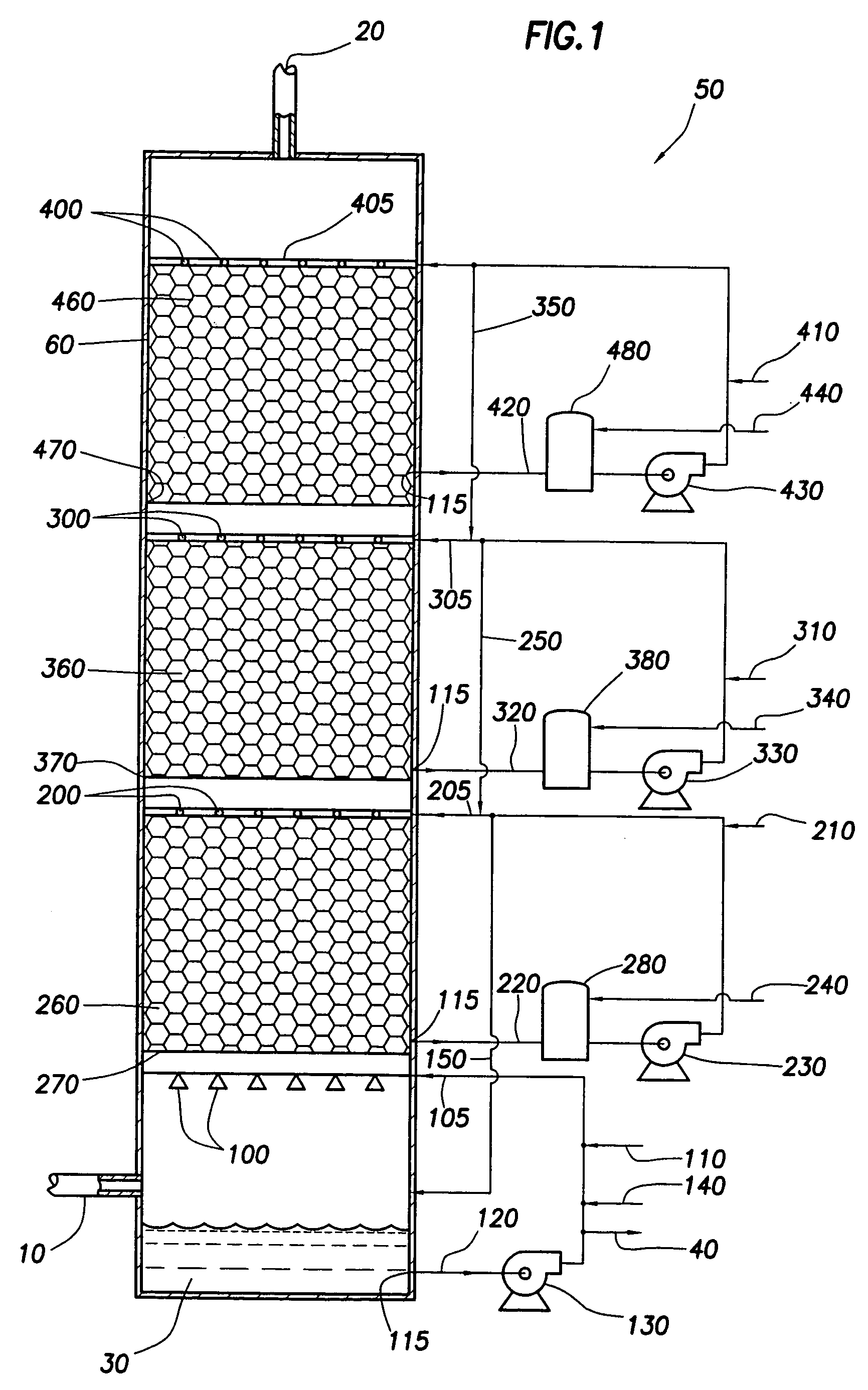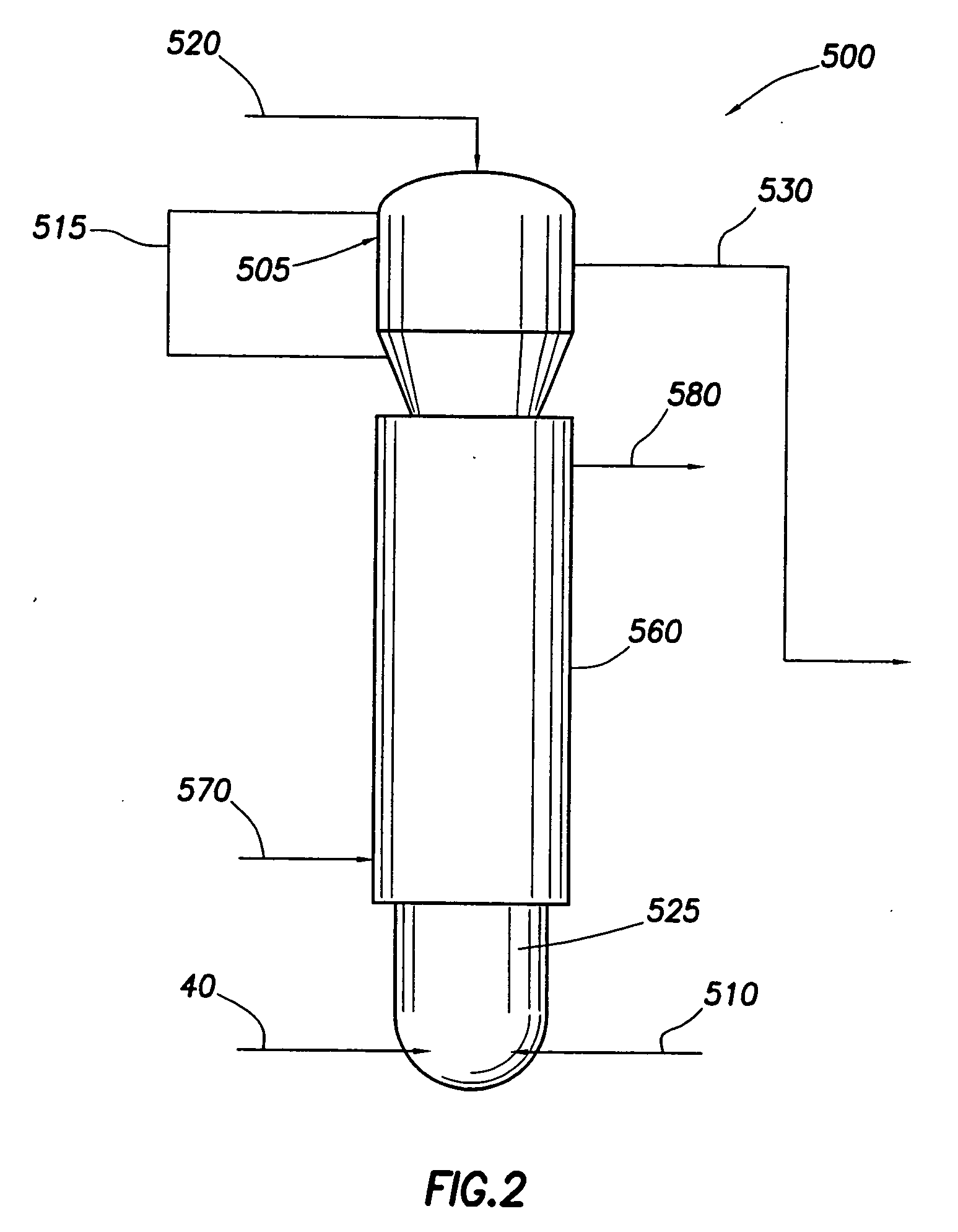Process and apparatus for scrubbing sulfur dioxide from flue gas and conversion to fertilizer
- Summary
- Abstract
- Description
- Claims
- Application Information
AI Technical Summary
Problems solved by technology
Method used
Image
Examples
Embodiment Construction
[0015] In the present invention, a portion of the sulfur dioxide in an incoming flue gas stream is removed from the effluent flue gas through the use of a multistage scrubber. This multistage scrubber removes the sulfur dioxide from the flue gas by reacting it with ammonia.
[0016] There are two overall primary reactions that occur within the multistage scrubber:
SO2+NH3+H2O→NH4HSO3 (bisulfite)
SO2+2NH3+H2O→(NH4)2SO3 (sulfite)
[0017] In practice, the actual reactions are:
(NH4)2SO3+SO2+H2O⇄2NH4HSO3
NH4HSO3+NH3⇄(NH4)2SO3
[0018] The ratio of the bisulfite to sulfite produced depends primarily on pH. As pH rises, more sulfite is produced. Reducing the pH will correspondingly increase the relative ratio of bisulfite to sulfite. At a pH of below 5.8, the predominate product will be bisulfite. Because carbon dioxide will always be present in flue gas, the pH at which the reaction occurs should generally be kept acidic in order to reduce absorption of CO2 where absorption of CO2 is undesirable. I...
PUM
| Property | Measurement | Unit |
|---|---|---|
| Temperature | aaaaa | aaaaa |
| Fraction | aaaaa | aaaaa |
| Fraction | aaaaa | aaaaa |
Abstract
Description
Claims
Application Information
 Login to View More
Login to View More - R&D
- Intellectual Property
- Life Sciences
- Materials
- Tech Scout
- Unparalleled Data Quality
- Higher Quality Content
- 60% Fewer Hallucinations
Browse by: Latest US Patents, China's latest patents, Technical Efficacy Thesaurus, Application Domain, Technology Topic, Popular Technical Reports.
© 2025 PatSnap. All rights reserved.Legal|Privacy policy|Modern Slavery Act Transparency Statement|Sitemap|About US| Contact US: help@patsnap.com



